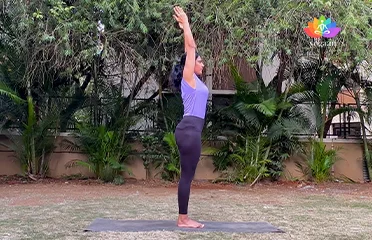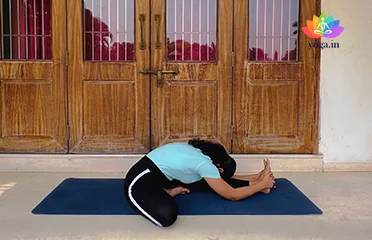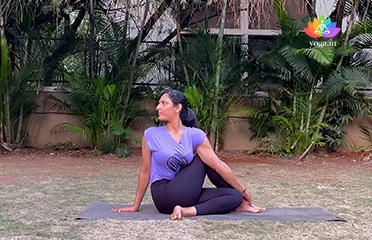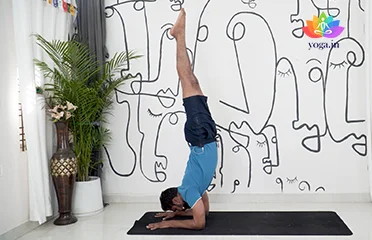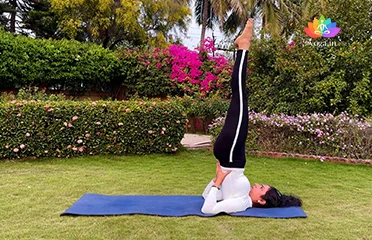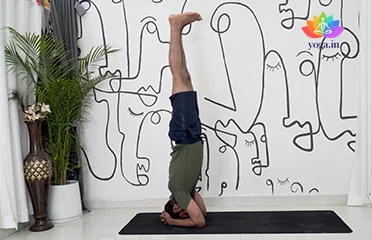Hastapadasana (Hand to Foot Pose)
हस्तपदासन / Hand to Foot Pose
The sanskrit name is derived from hasta (हस्त) means hands, pada (पदा) [�K]
Janusirsasana (Head to Knee Pose)
जानुशीर्षासन / Head to Knee Pose
The Sanskrit name is derived from (जानु) Janu means knee, Sirsa (शीर्षा) [�K]
Matsyendrasana (Lord of the Fishes Pose)
मत्स्येन्द्रासन / Lord of the Fishes Pose
The name Matsyendrasana is derived from the Sanskrit words Matsya (मत्स्य) [�K]
Pincha Mayurasana (Peacock Feather Pose)
पिंचमयूरासन / Peacock Feather Pose
The Sanskrit name is derived from Pincha (पिंच) meaning feathered, Mayur [�K]
Sarvangasana (Shoulderstand)
सर्वाङ्गासनI / Shoulderstand
The Sanskrit name is derived from Sarva (सर्वाङ्ग) meaning all, [�K]
Sirsasana (Headstand)
शीर्षासन / Headstand
The Sanskrit name is derived from Sirsa (शीर्ष) meaning head and asana [�K]
Yoga for Appendicitis – A Focus on Well-Being
Yoga, an ancient practice integrating physical postures (asanas), breathing exercises (pranayama), meditation, and relaxation techniques, offers a holistic approach to well-being. It can enhance physical flexibility, strength, and balance, promote relaxation and stress management, and contribute to improved overall health.
Understanding Appendicitis
However, it’s crucial to understand that yoga is not a substitute for medical treatment. Appendicitis, a medical emergency involving inflammation of the appendix, requires immediate medical attention from a qualified healthcare professional. Symptoms include:
- Severe abdominal pain, often starting around the navel and shifting to the lower right abdomen
- Nausea and vomiting
- Loss of appetite
- Fever
- Swelling in the abdomen
- Difficulty passing gas
If you experience these symptoms, seek immediate medical attention. Early diagnosis and treatment are critical for preventing complications like a ruptured appendix.
Yoga for Overall Wellness, along with Appendicitis Treatment
It’s important to understand that yoga is not a recommended treatment for appendicitis. Appendicitis is a serious medical condition requiring immediate medical attention. Symptoms like severe abdominal pain, nausea, vomiting, and fever can indicate appendicitis. If you experience these symptoms, consult a doctor right away. Early diagnosis and treatment are crucial for a full recovery.
Yoga offers a range of benefits for overall health and well-being, but it should not be considered a substitute for professional medical advice or treatment, especially for acute conditions like appendicitis.
Yoga for Well-Being
While yoga isn’t a treatment for appendicitis, it can be a valuable tool for promoting overall well-being and potentially reducing the risk of some health concerns. Here’s how:
- Stress Reduction: Yoga’s focus on mindful movement and breathwork helps manage stress hormones, creating a calmer internal environment. Chronically high stress can weaken the immune system, potentially making you more susceptible to various illnesses.
- Improved Circulation: Certain yoga postures promote healthy blood flow, which is essential for transporting nutrients and immune cells throughout the body.
- Enhanced Body Awareness: Yoga can cultivate a deeper connection with your body’s signals, allowing you to identify potential issues sooner and seek appropriate care if needed.
Important Considerations:
- Listen to Your Body: Always modify yoga poses to suit your individual needs and comfort level. If you experience any pain or discomfort, stop the practice and consult a healthcare professional.
- Seek Guidance: Consider practicing with a qualified yoga instructor who can guide you safely and adapt postures based on your health status.
- Maintain a Balanced Approach: Yoga complements a healthy lifestyle that includes a balanced diet, regular exercise, and adequate sleep.
Remember, yoga is a journey of self-discovery and exploration. It’s not a one-size-fits-all approach. Always prioritize professional medical advice, especially when dealing with serious health concerns.
Additional Tips for Well-being
Here are some other practices that can contribute to well-being alongside a healthy lifestyle:
- Meditation: Mindfulness meditation can help manage stress and promote relaxation.
- Deep Breathing Exercises: Pranayama techniques can enhance lung function and promote relaxation.
- Adequate Sleep: Prioritize getting enough quality sleep for optimal physical and mental well-being.
- Regular Exercise: Engage in moderate-intensity exercise most days of the week to maintain physical fitness.
- Healthy Diet: Eat a balanced diet rich in fruits, vegetables, whole grains, and lean protein to nourish your body.
By incorporating these practices into your life, you can support your overall health and well-being. Let yoga be your ally in fostering a sense of inner peace and creating a foundation for a healthier you.


